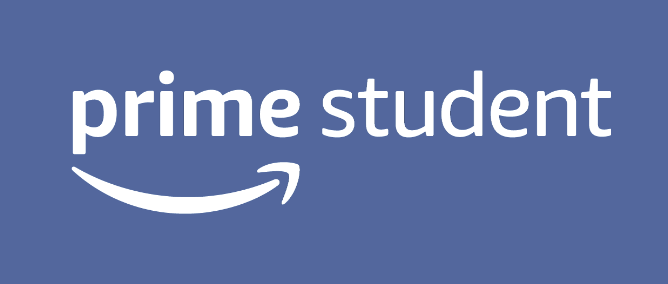TUNは、の社長兼創設者であるBetsyMayotteと一緒に座ります。 学生ローンアドバイザー協会 (TISLA)、学生ローンを統合する前に知っておくべきことについて話し合う。
TUN:ベッツィー、ご参加いただきありがとうございます。
マヨット:こんにちは!
学生ローンを統合するとはどういう意味ですか?
とは対照的に 借り換え、私たちが学生ローンの統合について話すとき、私たちはほとんど常に話している 連邦学生ローン。 統合とは、全額が支払われる個々のローンを取得し、それらすべてのローンを組み合わせたXNUMXつの新しいローンを作成することを意味します。
それを行う場所はXNUMXつだけです。 それは教育省を通じてです。 Studentaid.gov。 それは無料です。 私は、有料であなたのためにそれをすることを申し出るいくつかの汚い会社がそこにあるので、強調します。 プロセスは非常に簡単で、繰り返しになりますが、無料です。 だから、あなたのためにこれをするために誰かにお金を払う理由はありません。
連結連邦学生ローンの金利は、原資産ローンの金利の加重平均です。 それらは、最も近い10分の12のポイントに切り上げられます。 したがって、低金利を得るという意味で連邦学生ローンを借り換えることはできません。 しかし、それが行うことは、それはあなたの支払いを下げることができる期間を延長することです。 したがって、通常の学生ローンの返済期間は30年ですが、連邦政府の統合の期間はXNUMX〜XNUMX年になります。
素晴らしい。 借り手は学生ローンの統合をいつ検討すべきでしょうか?
誰もが統合すべきこの神話がまだそこにあるので、それは素晴らしい質問です。
それは、誰もが統合すべきだった2000年代初頭にさかのぼります。 その理由は、当時、ほとんどの連邦学生ローンは変動金利であったため、経済の状況に応じて金利が毎年変化するためです。 それらのほとんどは8%程度までしか上昇しませんでしたが、12%または14%まで上昇する可能性もあります。 そのため、2000年代の初めに、率は1%と2%のように非常に低くなりました。 統合は、その低レートを固定する方法でした。 したがって、統合すると、その時点でのレートが何であれ、それらが使用されました。 したがって、利率が1%または2%で、連結した場合、それが連結利率であり、その利率で固定されていました。
それで、当時、誰もが統合しました、そして彼らは持っているべきです! 当時人々が統合したもうXNUMXつの理由は、XNUMXつのローンとXNUMXつの異なるサービサーがいることは珍しくなく、混乱を招きました。 したがって、統合は単一の請求書を取得する方法でもありました。
今日、金利は固定されています。 2006年以降に行われたローンには、固定金利があります。 したがって、統合はそこでは役に立ちません。 そして、教育省は、XNUMXつのローンとXNUMXつの異なるサービサーのすべてがもう起こらないようにするためにかなり良い仕事をしました。 だから、とにかく単一の請求書で終わることになります。
今日統合する理由
今日統合する唯一の理由は、まだ参加資格がない可能性のあるプログラムにアクセスできるようにすることです。 たとえば、以前は連邦家族教育ローン プログラム (FFEL) と呼ばれていたものからの古いローンがある場合、それらのローンは次のようなものの対象にはなりません。 公共サービスローンの許し または収入主導の返済計画のほとんど。 ただし、studentaid.govのダイレクトローンプログラムに統合すると、その対象になります。
したがって、これらの古いFFELローン、またはPerkinsローンを持っている人は、これらのプログラムにアクセスしたい場合は統合したいと思うかもしれません。
統合を検討する必要がある他の人々は 親PLUSローン。 今、私は多くの家族が親がParent PLUSローンを借りるという取り決めを持っていることを知っていますが、学生は支払いをすることに同意します。 低額の支払いオプションのほとんどは、親の借り手の状況に基づいているため、ParentPLUSローンは収入主導型のプランのいずれにも適格ではありません。 ただし、Parent PLUSローンを統合すると、IncomeContingentと呼ばれる収入主導型のプランにアクセスできるという抜け穴があります。 ですから、家族にParent PLUSローンがあり、彼らがより低い支払いを得ようとしているのであれば、それは家族が調べるべきものです。
それ以外は、最近ほとんどの人が統合する価値は本当にありません。
ローンを一本化することを決めた借り手は、次のステップは何でしょうか? プロセスをスムーズかつ簡単にするためのヒントをいくつか教えていただけますか?
プロセスは非常に簡単です。 あなたは行きます Studentaid.gov、オンラインで申し込みます。
私が指摘することのXNUMXつは、あなたが記入している約束手形の中に、統合したいローンを書くためのXNUMXページと、統合したくないローンをリストするためのXNUMXページがあるということです。 統合したくないローンがある場合は、そのXNUMXページ目に必ず記入してください。 私が言及した最初のページからそれらを単に除外しないでください。
統合により、教育省のすべてのローンサービサーの中からローンサービサーを選択できるようになります。
他に準備する必要があるのは、その時点で返済計画を選択することもできるということです。 そうする必要はありません。そうしない場合は、統合期間が何年であっても支払いが同じである標準プランに加入することになります。 ただし、より低い支払いプランが必要な場合は、申請書に記入するときにその選択もできるように、事前に調査してください。
すごい。 それで、あなたが私的および連邦の学生ローンの両方を持っているならば、あなたはそれらを一緒に統合することができますか?
はい。 しかし、それが良い考えかどうか私に尋ねてください。
それは良い考えですか?
いいえ。
民間ローンを連邦ローンプログラムに統合することはできません。 それを行う唯一の方法は、連邦ローンを民間ローンプログラムに借り換えることです。
そして、私がで述べたように 私たちが話した他の時間、それはほとんどの場合、ひどい考えです。 そうすれば、低額の支払いオプションや免除プログラムなど、民間ローンでは利用できない連邦学生ローンに特有の保護をすべて失うことになります。 あるいは、何か本当に悪いことが起こった場合、つまり、あなたが障害者になったり、亡くなったりした場合、連邦ローンは免除されます。 一般に、これらの免責は連邦政府のように民間融資では利用できません。
そして、取り消しはありません。 一度やってしまうと、元に戻すことはできません。
素晴らしい。 学生ローンを統合することで何らかの影響が生じる可能性はありますか? この決定が何らかの形で生徒たちに悪影響を与える可能性はあるでしょうか?
ええ。 いくつかあります。
収入主導型プランを追求している場合、古い FFEL ローンであっても収入主導型プランの対象となりますが、統合すると、元の収入主導型プランでの過去の履歴はすべて消去されます。
収入重視の計画に 10 年間取り組み、20 年または 25 年後には残額が免除されるとします。 統合すると、その 10 年間の履歴はなくなり、20 年または 25 年分の料金を全額支払う必要があります。
私は公共サービスローンの免除についていつもこれを目にしますが、これもまた元に戻すことはできないので、心が痛みます。 公共サービスローンの免除を求めていて、対象となる支払いがすでにある場合、統合するとそれらの支払いはすべて消去され、取り消すことはできません。
最後の潜在的な影響はもう少し微妙です。 全体として、統合するか借り換えるかにかかわらず、学生ローンに関しては、ゲームの名前は時間の経過とともに最も少ない金額を支払っています。 何らかの方法でローンの免除プログラムを追求しているのでない限り、時間の経過とともに最低額を支払う方法は、できるだけ早くローンを返済することです。
利息は、未払いの残高が何であれ、毎日発生します。 一部の人々は遅くまでこれに気づいていません。 彼らはある日目を覚まし、「ちょっと待ってください。 私は15年間学生ローンを支払っています。 ほぼ完了しなければなりません。」 そして、彼らは見たり行ったりします。 まだ15年残っています。 何故ですか?" ローンの期間を延長したからです。
いつでも追加料金を支払うことができます。 前払いペナルティは決してありません。 私は学生ローンで何をしているかに関係なく、学生ローン戦略を毎年再評価するように常にアドバイスしています。 納税の時期はそれを行うのに最適な時期です。 したがって、これは、統合してローンを完済するのに 30 年かかる場合に発生する可能性のある金利の上昇を防ぐのに役立ちます。
素晴らしい。 私が読み飛ばした可能性がある追加のヒントや情報があれば追加してください。
連邦ローンの整理は非常に簡単です。 私が言及する最後のことは、彼らがローンを予約する方法が少し混乱しているように見えるかもしれないということです。
したがって、連邦ローンについては、 補助金付きローン、在学中は利息が発生せず、ほとんどの場合猶予期間または猶予があり、収入主導型プランに基づいて補助金も利用できます。 それから、 無担保ローン、初日から利息が発生し、ローンが完済されるまで毎日利息が発生します。
統合の良い点は、実際には常にそうであるとは限りませんでしたが、統合するときに、それらの補助金を維持することです。
ローンの半分が補助金を受け、残りの半分が補助金を受けなかったとします。 延期や補助金対象イベントを実施した場合、統合ローンのその部分に対する補助金は維持されることになります。
そうですね、それを正確に行う唯一の方法は、帳簿上、ローンを XNUMX つの部分に分けることです。 したがって、借り手は XNUMX つのローンがあると考えます。 法的にはそうではありません。 信用報告書を見ると、借金はXNUMX件です。 法的に何か問題が起こったとしても、それはXNUMXつのローンだろう。 しかし、サービサーのウェブサイトや請求書、さらには返済履歴を見ると、XNUMXつのローンのように見えるでしょう。 したがって、実際には XNUMX つのローンではないことを理解していただくのが良いでしょう。
すごい。 ベッツィ、今日はご参加いただきありがとうございます。
ええ。 お招きいただきありがとうございます。
このインタビューはわかりやすくするために編集されています。



